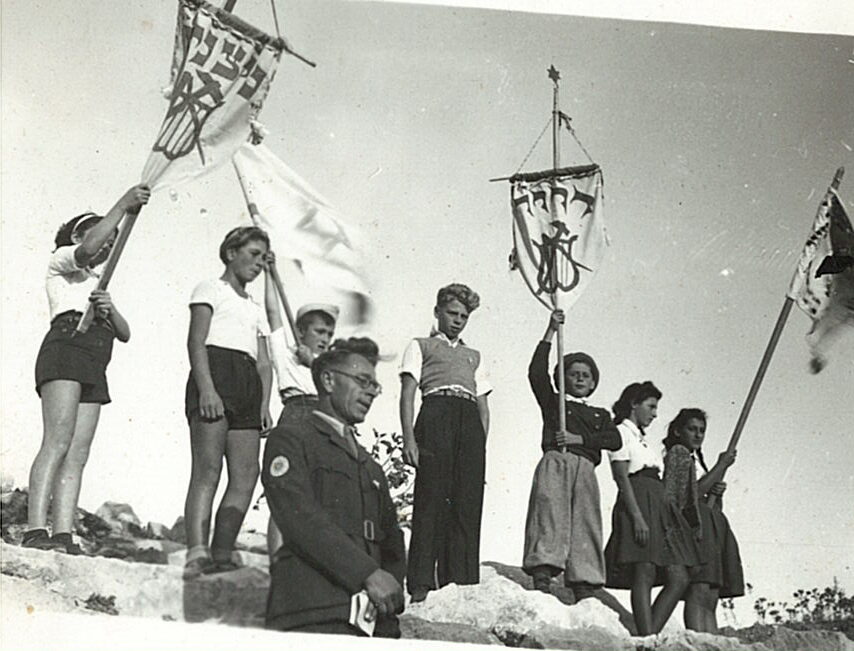ABSTRACT The article explores how the Great Depression was reflected in Jewish newspapers, particularly the Czech-language Zionist periodical Židovské Zprávy (Jewish News). It highlights the key issues that Zionists considered crucial during the economic crisis. Additionally, the article provides an overview of the status and economic situation of the Jewish minority in the former Czech lands, including their integration into the Czechoslovak economy. The crisis exacerbated disparities between the Czech lands, Slovakia, and Subcarpathian Rus, as well as between internal and border regions. Alongside topics related to the impact of the crisis and the differing conditions of the Jewish minority in various regions of Czechoslovakia, Zionists also addressed the effects of the crisis on Palestine.
Tag: Zionism
ABSTRACT
Immediately after the foundation of the Protectorate of Bohemia and Moravia, activities, focus groups, bureaucratic structure, and organization of hachsharah training centers had to change considerably. Chances to emigrate became more and more limited. Since the completion of the hachsharah training became a prerequisite for obtaining the emigration certificate, the reorganization of hachsharah training centers became a crucial task for Zionists. Various agricultural training centers, vocational training, and requalification courses were established and organized with unprecedented intensity. For these activities, He-Halutz department of the Palestinian Office was responsible, and organized these places mostly on farms and manors of Czech farmers; this became a part of the economic exploitation of the Jews. The paper will analyze changes in age groups, social status of emigration candidates and trainees, reorganization of training camps from the perspective of the Zionist movement as well as temporal changes of Jewish geography in the former territory of the Protectorate of Bohemia and Moravia.
ABSTRACT
This article focuses on theater as a form of cultural, political and ideological training for aliyah aimed at Jewish displaced persons (DPs) in postwar Italy. Exploring the private archives of the Zionist emissary Zvi Aldouby, we intend to move beyond the traditional idea of hachsharah as a preparation for aliyah based primarily on physical and agricultural training. This analysis relates on a set of diverse sources, ranging from institutional reports, official and informal correspondence, personal notes, sketches, photographs and drawings. Adopting an interdisciplinary perspective, the article is divided in two parts. The first one frames Aldouby’s mission in relation to the rehabilitative programs and the political landscape within the refugee camps. The second part explores the birth of a dramatic circle founded by Aldouby and analyzes two theatrical plays directed by him, The Golem (Ha-Golem) by H. Leivick and This Land (Ha-Adamah Ha-Zot) by A. Ashman. Through the analysis of Aldouby mission, the article emphasizes the role of culture among Jewish DPs as well as the political motivations behind it. In this scenario, characterized by the Jewish DPs’ efforts to start a new life and the Zionist emissaries’ endeavor to organize their aliyah, theater became the stage to promote and discuss new understandings of home and identity.
ABSTRACT
The primary aim of our study is to explore the post-Holocaust history of the hachsharot in Hungary through the eyes of their members. Our study is based on a structured analysis of one hundred and one interviews from the USC Shoah Foundation’s Visual History Archive. The immediate post-war years saw an unprecedented growth of the Zionist movement in Hungary. During this short period, the hachsharot played a vital role in the lives of those who, unlike most Jews, chose dissimilation. In our study, we explore the interviewees’ family backgrounds and their prewar connection to Zionism. We explore in detail their time in the Zionist movement and the hachsharot. However, we do not focus only on the facts, but put special emphasis on personal experiences and feelings. Finally, we also address how the identities of our interviewees changed and how these experiences shaped their first decades after their lives in the hachsharot.

